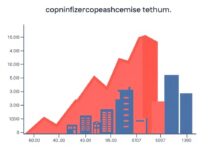How to invest during inflation and protect your money

Consider allocating a portion of your portfolio to real assets such as real estate or commodities. These tend to hold their value better when currency purchasing power declines, providing a hedge against rising prices.
Another tip is diversifying into inflation-indexed bonds. These fixed-income securities adjust with the consumer price index, ensuring that interest payments and principal value increase alongside inflation, safeguarding your purchasing power.
Additionally, consider investing in equities with strong pricing power. Companies that can pass increased costs onto consumers without losing market share are more likely to maintain profitability and protect asset value in an inflationary environment.
Precious metals, particularly gold and silver, often serve as a store of value during economic uncertainty. Allocating a small percentage of your investments into these assets can provide stability when traditional currencies falter.
Finally, keeping an eye on sectors that historically outperform during inflation–such as utilities and consumer staples–can offer better returns as prices rise. Always stay informed about market conditions and adjust strategies accordingly to enhance financial resilience.
Diversifying Asset Classes
Allocate investments across various asset categories such as stocks, bonds, real estate, and commodities. This approach mitigates risks associated with any single class’s volatility while enhancing overall value.
Consider incorporating inflation-protected securities like TIPS (Treasury Inflation-Protected Securities) to safeguard savings against rising prices. These instruments adjust principal based on the Consumer Price Index, ensuring that returns keep pace with inflation.
Real estate serves as a tangible asset that often appreciates over time, providing rental income and potential tax benefits. Additionally, exploring commodities such as gold or agricultural products can offer a hedge against currency devaluation and economic instability.
Maintain a balanced allocation by regularly re-evaluating your portfolio. This should involve adjusting exposure to different classes in response to market conditions and personal financial goals. A diversified mix not only enhances resilience but also positions for long-term growth amidst economic fluctuations.
Choosing Inflation-Protected Bonds
Consider allocating a portion of your portfolio to Treasury Inflation-Protected Securities (TIPS). These bonds are designed to safeguard the purchasing power of your savings by adjusting their principal value in line with inflation. This means that as inflation rises, so does the value of your investment.
When investing in TIPS, pay attention to the yield. While these securities often offer lower initial interest rates compared to traditional bonds, the protection against inflation can significantly enhance long-term returns. Look for bonds with varying maturities to balance risk and liquidity.
Another option is municipal bonds indexed to inflation. These can provide tax-free income while also offering protection against rising prices. Always assess the credit quality and market conditions before making a decision.
Stay informed about economic indicators that influence interest rates and inflation trends. Monitoring these factors will help you make timely adjustments to your bond holdings, ensuring they align with your financial goals.
Lastly, consider diversifying within your bond investments. A mix of TIPS, municipal bonds, and other fixed-income securities can create a robust defense against potential losses in value during inflationary periods.
Investing in Real Assets
Consider allocating a portion of your portfolio to tangible assets such as real estate, commodities, or precious metals. These investments often maintain their value and can even appreciate when currency purchasing power declines.
Real estate provides rental income potential and capital appreciation, making it a solid choice. Focus on properties in high-demand areas or those with growth potential. Look for opportunities that offer favorable market conditions, like low-interest rates or tax incentives.
Commodities like gold and silver serve as a hedge against rising prices. Historically, these metals have retained their worth over time, especially during economic instability. Monitor global supply and demand trends to identify the best entry points for purchases.
Infrastructure investments represent another avenue to consider. Projects related to energy, transportation, or utilities often generate stable returns through government contracts or user fees. Assess the long-term viability and revenue potential of these projects before committing funds.
Finally, explore agricultural assets which may benefit from increasing food prices driven by inflationary pressures. Investing in farmland can provide both intrinsic value and income through crop production or leasing agreements.
Rebalancing Your Portfolio
Regularly adjusting your portfolio is crucial to maintain alignment with your financial goals and risk tolerance. As inflation impacts asset values, a proactive approach to rebalancing can enhance the resilience of your savings.
- Assess Asset Allocation: Review the distribution of your assets. If equities have outperformed, they may comprise a larger portion than intended, increasing exposure to volatility.
- Set Target Ranges: Define acceptable ranges for each asset class. For example, if stocks should represent 60% of your portfolio, establish a threshold (e.g., 55%-65%) to trigger rebalancing actions.
- Consider Costs: Evaluate transaction fees associated with buying and selling assets. Opt for low-cost funds or brokers to minimize expenses during reallocation.
The objective is not merely to return to original weights but also to adapt strategically based on current economic conditions and anticipated inflationary pressures.
- Timing Matters: Set specific intervals for reevaluation–quarterly or semi-annually–to ensure timely adjustments without reacting impulsively to market fluctuations.
- Diversification Within Classes: Reassess individual holdings within each asset class. For instance, consider shifting from traditional stocks into sectors expected to thrive amid rising prices, like energy or commodities.
- Savings Growth Focus: Seek opportunities that enhance value over time. Incorporate inflation-linked securities or real estate investments as part of your strategy during rebalancing.
This disciplined approach ensures that your assets remain aligned with evolving financial objectives while addressing the challenges posed by rising costs in the economy.







